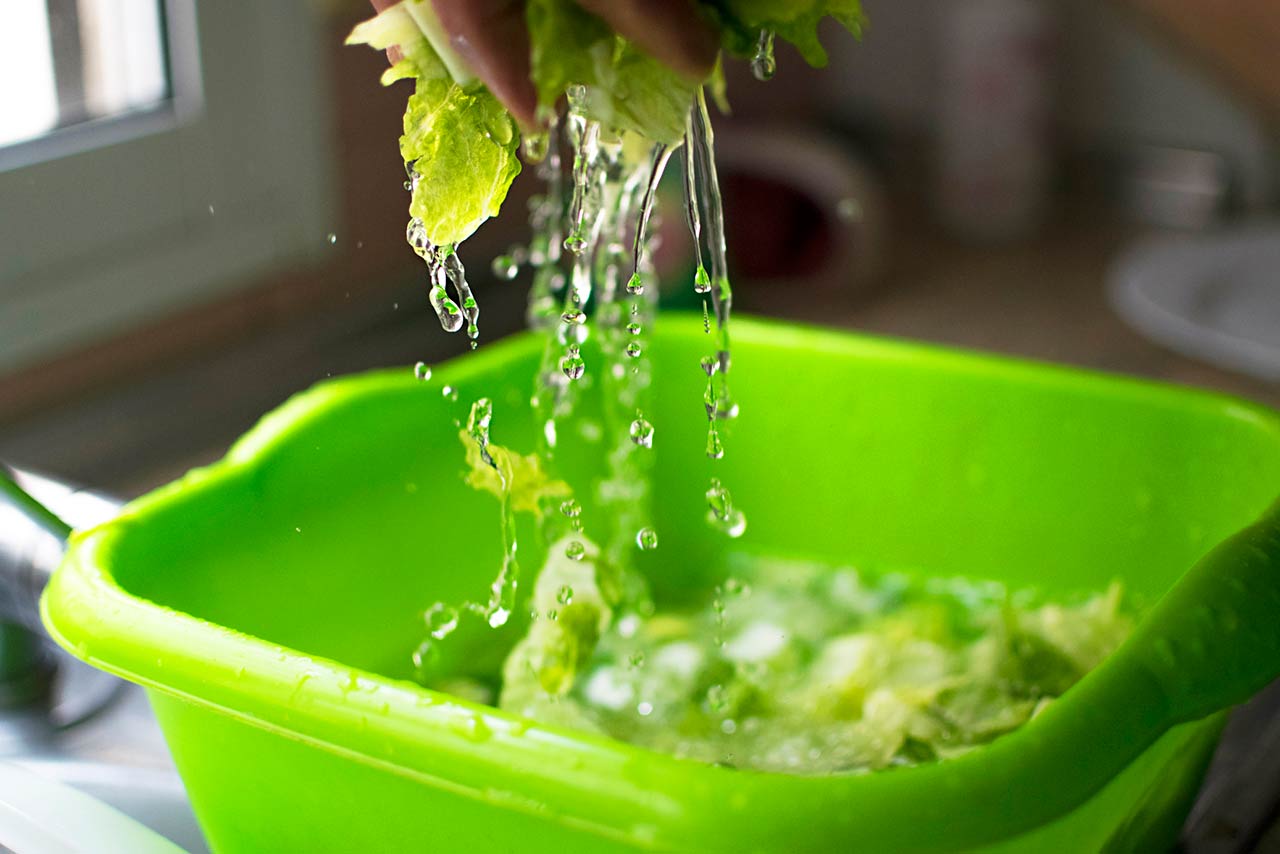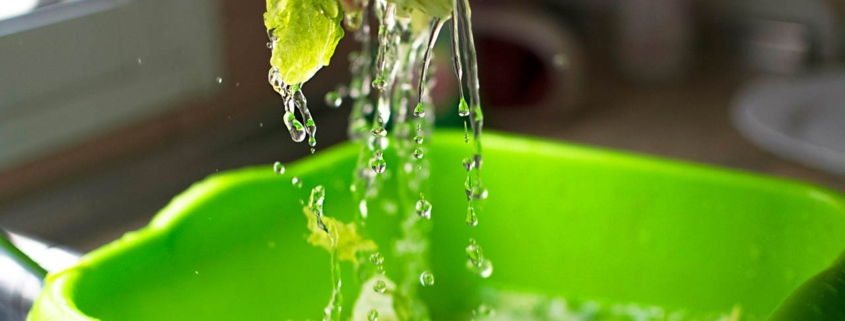Chicago Home and Lifestyles – Washing produce

We think of food borne illness as coming primarily from meat and seafood, but there have been many outbreaks in the last few years in produce. The FDA recommends washing vegetables under cold running water. Water is sufficient; don’t use bleach or soap which can also cause illness. Commercial produce rinse products were studied and the results showed that cold water was just as effective at removing microbes and pesticides. Drying with a clean paper towel will remove even more. Wash all produce, even those that you peel, to avoid transferring anything to the inside. Wash your hands before and after washing produce, and just before using. Below are similar tips, but for specific types of fruit and vegetables!
Berries are very delicate and expensive, especially this time of year. Strawberries can take on the full stream of water straight from the faucet. Rinse in a colander and dry on a paper towel lined cookie sheet. More delicate berries like raspberries and blackberries should be dipped. Place them in a small colander and dip them into a large bowl of cold water, then dry on paper towels.
Leeks are perhaps the dirtiest vegetable. Their many layers trap dirt and sand. Cut off the tops and bottoms of the leeks. Cut them vertically in half. Place the root end down in a tall container, such as a pitcher. Let it soak for 15 minutes. You will see the grit left on the bottom of the container. When you take them out, give them another good rinse under the faucet.
Greens and herbs are often full of grit, sand and dirt. A good soak in a water bath does wonders. Fill a large bowl with cold water and swish your veggies around to shake loose the grit; let the veggies sit for 5 additional minutes if they are particularly dirty. Lift them out carefully, all the dirt and grit will stay at the bottom. Dry the greens well in a salad spinner. Towels work too, but I prefer the spinner as it removes the most water. Chill the greens before serving for maximum crispness. Some tougher greens like spinach, kale and bok choy may need a double swish and soak.
Root vegetables like potatoes, carrots, beets, radishes, parsnips, and melons will do fine with a cold water rinse and a scrub with a stiff brush. They don’t need to be peeled, but if you are intending to eat the peel (like in the case of potatoes) a good scrub is even more necessary.
I’m not sure about you, but I was always told that you should never wash mushrooms. I thought a good rub with a damp towel was all that was needed. But that has changed. Cook’s Illustrated found that a pound of white mushrooms only absorbed 1 tablespoon of water after soaking for 1 minute! So, go ahead and wash your white mushrooms. Other varieties like oyster and portobello mushrooms should still only be wiped off with a paper towel or pastry brush. That’s because these types have more gills, which trap water.
Kathleen Weaver-Zech and Dean’s Team Chicago



